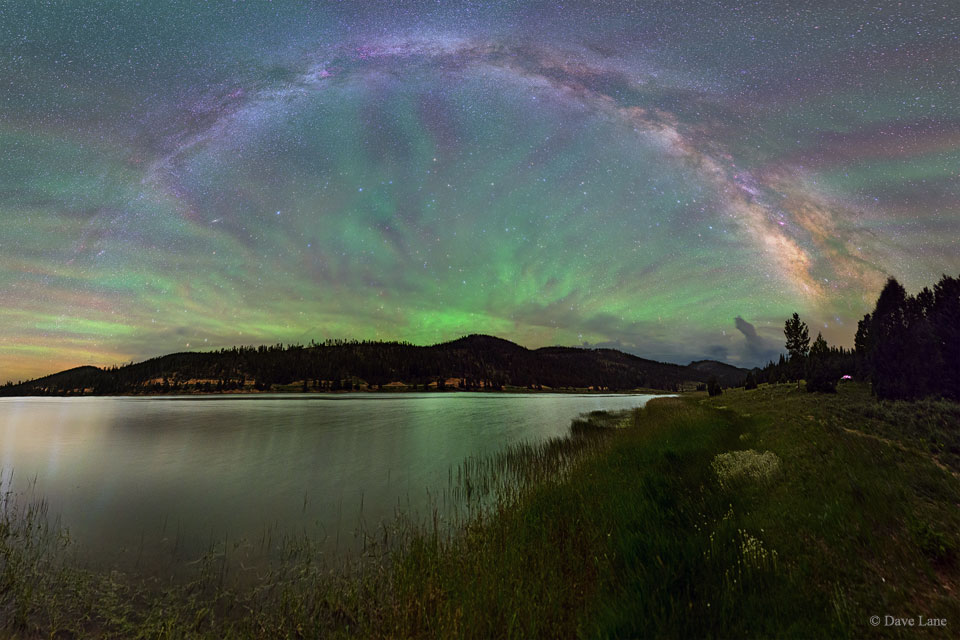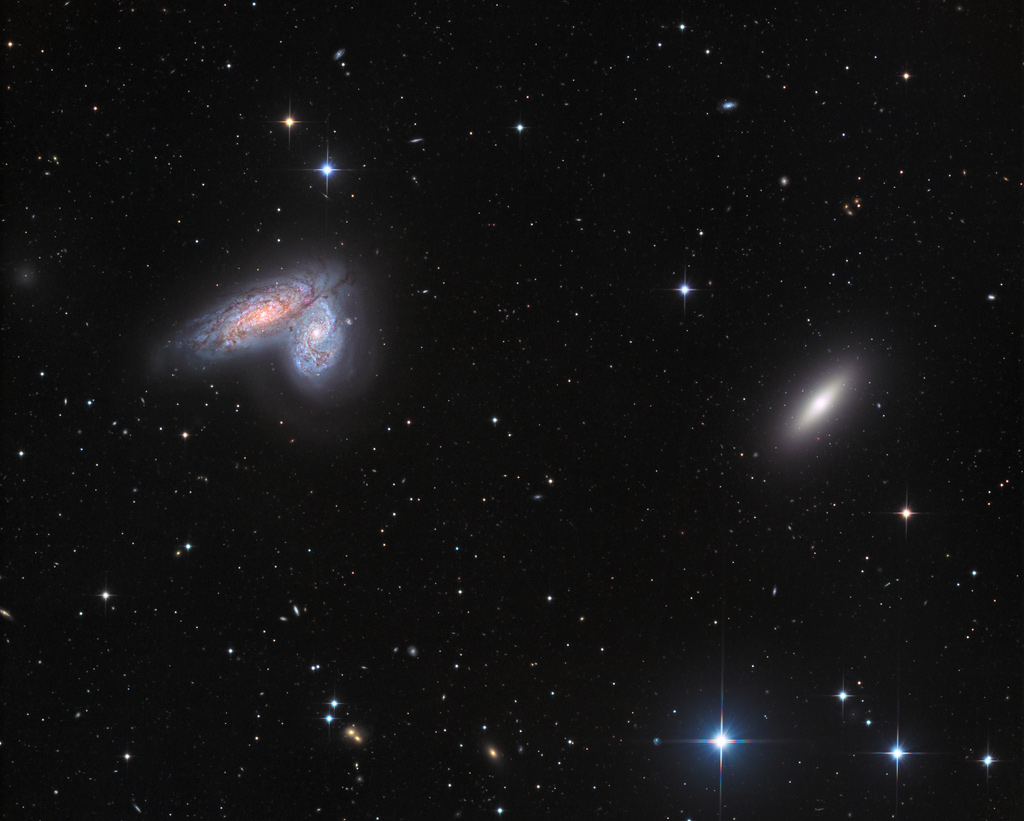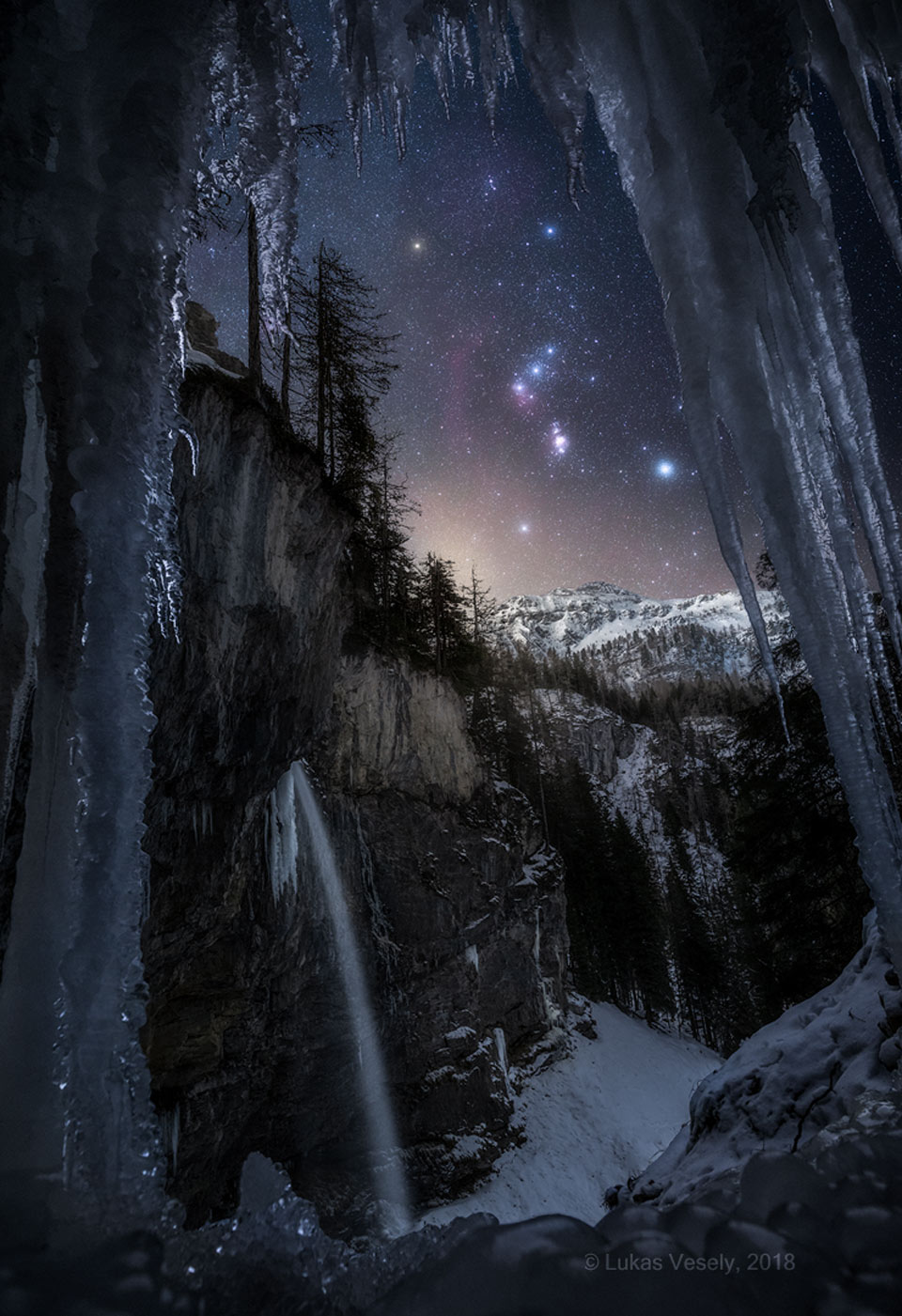"On the Beautiful Blue Danube"
Nombre total de pages vues
04/02/2019
03/02/2019
Science & Technology - Astronomy picture of the day - 2019 February 3 : An Airglow Fan from Lake to Sky

Explanation: Why would the sky look like a giant fan? Airglow. The featured intermittent green glow appeared to rise from a lake through the arch of our Milky Way Galaxy, as captured during 2015 next to Bryce Canyon in Utah, USA. The unusual pattern was created by atmospheric gravity waves, ripples of alternating air pressure that can grow with height as the air thins, in this case about 90 kilometers up. Unlike auroras powered by collisions with energetic charged particles and seen at high latitudes, airglow is due to chemiluminescence, the production of light in a chemical reaction. More typically seen near the horizon, airglow keeps the night sky from ever being completely dark.
02/02/2019
Short texto - Pinochio
Ao moderno Socrates, e bem assim "fidalgos" de todos partidos, fodam-lhes o focinho, rebentem-lhes o cu ; façam-nos ajoelharem-se para que nobre e gentilmente recebam a merecida ostia !
Longe de mim FDgP !!!
Longe de mim FDgP !!!
02-02-2019
JoanMira
01/02/2019
Science & Technology - Astronomy picture of the day - 2019 February 1 : Twin Galaxies in Virgo

Explanation: Spiral galaxy pair NGC 4567 and NGC 4568 share this sharp cosmic vista with lonely elliptical galaxy NGC 4564. All are members of the large Virgo Galaxy Cluster. With their classic spiral arms, dust lanes, and star clusters, the eye-catching spiral pair is also known as the Butterfly Galaxies or the Siamese Twins. Very close together, the galaxy twins don't seem to be too distorted by gravitational tides. Their giant molecular clouds are known to be colliding though and are likely fueling the formation of massive star clusters. The galaxy twins are about 52 million light-years distant, while their bright cores appear separated by about 20,000 light-years. Of course, the spiky foreground stars lie within our own Milky Way.
31/01/2019
Science & Technology - Astronomy picture of the day - 2019 January 31 : Sharpless 308: Star Bubble

Image Credit & Copyright: Laubing
Explanation: Blown by fast winds from a hot, massive star, this cosmic bubble is huge. Cataloged as Sharpless 2-308 it lies some 5,200 light-years away toward the constellation of the Big Dog (Canis Major) and covers slightly more of the sky than a Full Moon. That corresponds to a diameter of 60 light-years at its estimated distance. The massive star that created the bubble, a Wolf-Rayet star, is the bright one near the center of the nebula. Wolf-Rayet stars have over 20 times the mass of the Sun and are thought to be in a brief, pre-supernova phase of massive star evolution. Fast winds from this Wolf-Rayet star create the bubble-shaped nebula as they sweep up slower moving material from an earlier phase of evolution. The windblown nebula has an age of about 70,000 years. Relatively faint emission captured in the expansive image is dominated by the glow of ionized oxygen atoms mapped to a blue hue. SH2-308 is also known as The Dolphin Nebula.
30/01/2019
Science & Technology - Astronomy picture of the day - 2019 January 30 : From the Northern to the Southern Cross

Explanation: There is a road that connects the Northern to the Southern Cross but you have to be at the right place and time to see it. The road, as pictured here, is actually the central band of our Milky Way Galaxy; the right place, in this case, is dark Laguna Cejar in Salar de Atacama of Northern Chile; and the right time was in early October, just after sunset. Many sky wonders were captured then, including the bright Moon, inside the Milky Way arch; Venus, just above the Moon; Saturn and Mercury, just below the Moon; the Large and Small Magellanic Clouds satellite galaxies, on the far left; red airglow near the horizon on the image left; and the lights of small towns at several locations across the horizon. One might guess that composing this 30-image panorama would have been a serene experience, but for that one would have required earplugs to ignore the continued brays of wild donkeys.
29/01/2019
28/01/2019
Science & Technology - Astronomy picture of the day - 2019 January 28 : Orion over the Austrian Alps

Image Credit & Copyright: Lukáš Veselý
Explanation: Do you recognize this constellation? Through the icicles and past the mountains is Orion, one of the most identifiable star groupings on the sky and an icon familiar to humanity for over 30,000 years. Orion has looked pretty much the same during the past 50,000 years and should continue to look the same for many thousands of years into the future. Orion is quite prominent in the sky this time of year, a recurring sign of (modern) winter in Earth's northern hemisphere and summer in the south. Pictured, Orion was captured recently above the Austrian Alps in a composite of seven images taken by the same camera in the same location during the same night. Below and slightly to the right of Orion's three-star belt is the Orion Nebula, while the four bright stars surrounding the belt are, clockwise from the upper left, Betelgeuse, Bellatrix, Rigel, and Saiph.
22/01/2019
Science - Il était ...une éclipse : la Lune a pris des teintes bleutées

La Lune a pris des teintes bleutées.
21 janvier 2019, à Miami (Floride, Etats-Unis)
GASTON DE CARDENAS / AFP
Inscription à :
Commentaires (Atom)
ASTRONOMY - Portrait of NGC 1055
2025 November 27 Portrait of NGC 1055 Image Credit & Copyright : John Hayes Explanation: Big, beautiful spiral galaxy NGC 1055 is a...

-
2022 September 26 All the Water on Planet Earth Illustration Credit: Jack Cook, Adam Nieman, Woods Hole Oceanographic Institution ; Data ...
-
2025 May 11 The Surface of Venus from Venera 14 Image Credit: Soviet Planetary Exploration Program , Venera 14 ; Processing & Copyri...
